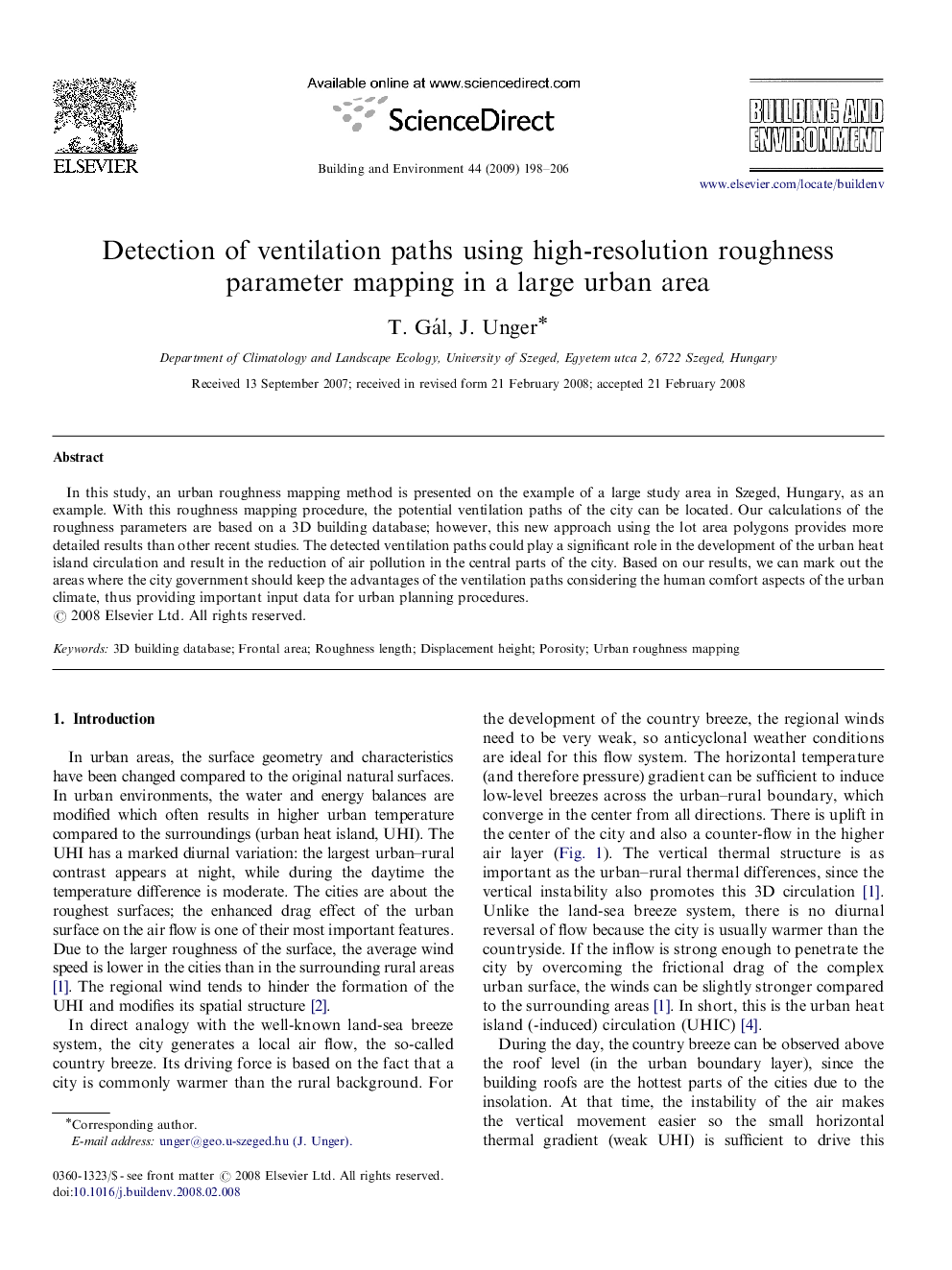| Article ID | Journal | Published Year | Pages | File Type |
|---|---|---|---|---|
| 249804 | Building and Environment | 2009 | 9 Pages |
In this study, an urban roughness mapping method is presented on the example of a large study area in Szeged, Hungary, as an example. With this roughness mapping procedure, the potential ventilation paths of the city can be located. Our calculations of the roughness parameters are based on a 3D building database; however, this new approach using the lot area polygons provides more detailed results than other recent studies. The detected ventilation paths could play a significant role in the development of the urban heat island circulation and result in the reduction of air pollution in the central parts of the city. Based on our results, we can mark out the areas where the city government should keep the advantages of the ventilation paths considering the human comfort aspects of the urban climate, thus providing important input data for urban planning procedures.
